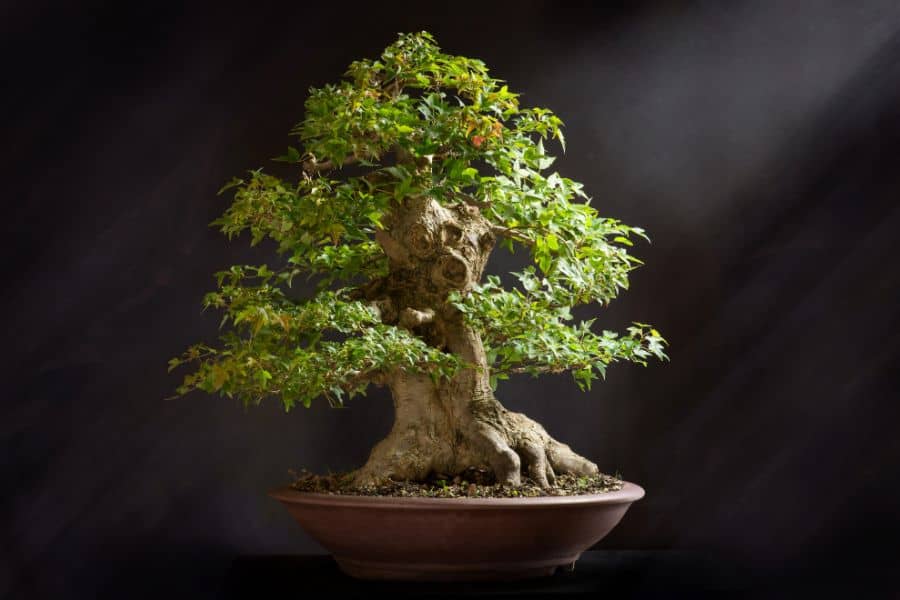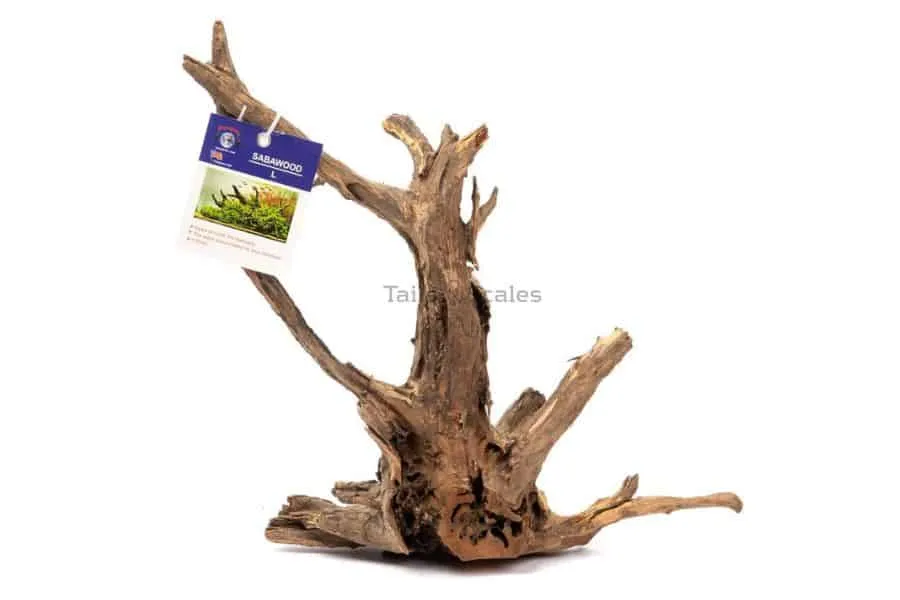When it comes to selecting the right driftwood for your specific purpose, it can be not very clear. You need to think about the shape, decaying conditions, and, most importantly, type. Different types of wood may suit different uses, so selecting driftwood can be hard.
Well, in this ultimate guide, we list out 21 popular types of driftwood and talk about their origin, characteristics, and suitability. This way, you can quickly decide which one suits you most.
The best driftwood types include:
| Australian Pine Azalea Beefwood Bonsai Buttonwood Cholla Corkscrew Willow Crepe Myrtle Linden Madrona Malaysian | Manzanita Mesquite Mopani Rhododendron Ribbon Wood Rosewood Saba Spider Tiger Western Hemlock |

Best Driftwoods For Your Aquarium, Artwork, And Garden
This is a long list of driftwood types you can find online or locally. These wood types have been arranged alphabetically to make them easy to find.
The key is understanding that each driftwood has its own strengths and weaknesses and may appeal to different collectors. You may also have your own preference.
Australian Pine
Originally from Down Under, it is known to be chunky, heavy, and dense driftwood. This means Australian Pine driftwood may be a good choice for aquariums, as it may sink into the water easily. It may also be good for gardens, perhaps as a base to place plants on top.
However, its dense and heavy nature may make it slightly harder to work with for art. You may find it harder to see and shape the wood. It may also need a longer bleaching process, as it is rather dark-colored and may contain a lot of tannins.
Azalea
Azalea driftwood is known for its intricate, small, and numerous branches. It is most popular as centerpieces in smaller aquariums with smaller fishes.
Most fishkeepers notice that their small fishes like to swim around the thin branches of the Azalea. It is also lightly colored, meaning you do not worry too much about leaching tannins into your aquarium water.

Azalea is less popular for art or gardening as they are usually too small to work with. When selecting Azalea driftwood, take note of selecting those with thickened branches, as thin and intricate ones may look nice but are less likely to last long.
Beefwood
Beefwood driftwood pieces are likely to originate from Australia. It is known for its thick tubings and beautiful, curvy roots that, on their own, can be pieces of art. It also has a dark, rich color. As a result, Beefwood driftwood can be rather expensive.
Beefwood is commonly used in gardens, where you can attach plants and ferns to it. Its dark color makes it a bad idea for an aquarium, and the tannins may leach out and pollute your tank. Bleaching beefwood reduces its aesthetic quality, which is not a smart thing to do as well.
Bonsai
Bonsai driftwood may originate from Japan, although with the popularity of Bonsai, your wood can come from anywhere. Like how actual Bonsai is cultivated, bonsai driftwood is handcrafted by artisans.

Bonsai driftwood usually makes excellent decoration pieces. Simply mount raw bonsai driftwood on a podium, which already makes a great piece of art. Some also enjoy placing Bonsai driftwood as a centerpiece in their aquarium and adding rocks, marbles, and leaves. Small fishes like to swim around it too.
Buttonwood
Buttonwood is native to Florida, which means you may easily find it in North America. It is usually quite thick and carries a rather nice ‘blanched’ black and white coloration. It is particularly popular for many uses, from the aquarium to art and gardening.
Gardeners love the black-and-white contrasts and enjoy attaching plants to them. Buttonwood driftwood can also be placed in the middle of a sand bed for a Zen feel. In aquariums, it works very well with bright green leaves or plants.
Cholla
Cholla driftwood may have a unique look, with many see-through holes all over the body. This is because Cholla driftwood is not a dead tree but rather the skeletal husk of the Cholla cactus. The cactus is native to Mexico.
Driftwood collectors love the intricate holes the wood piece has. It is also quite expensive to own. Many love how they look, and Cholla driftwood usually ends up in aquariums or as art projects.

However, finer pieces of Cholla driftwood may not last long in aquariums, as they are thin and may easily break. They are better off as decorations on homes and walls.
Corkscrew Willow
Corkscrew Willow is native to China but was eventually introduced to many countries and is now seen worldwide. It is known to have looks, thin and stringy branches. It also has a duller brown, grayish color.
Corkscrew Willow generally makes bad driftwood for aquariums. Its thin and long branches do not hold up well for long in the water. It is better used as art pieces. Interior decorators are known to link and tie many corkscrew willow driftwood together. This forms a wall or divider of sorts.
Crepe Myrtle
Crepe Myrtle is native to Korea and China, with the tree introduced to North America later. As a result, it could be easy for you to find Crepe Myrtle driftwood. The driftwood tends to be thick, with strong branches. It also has a yellow-brownish color that may look attractive to some.
As a result, Crepe Myrtle is popular with larger aquariums since its thick branches help it to last long. The light color is also less likely to leach in tennis into the aquarium water. Furniture makers like to cut out the trees and use them as a base to place a surface, such as a tabletop.
Linden Wood
Linden wood is native to North America. Yet, it is unique and rare driftwood to find. This may be because you do not see many natural Linden driftwood lying around. Instead, people actually cultivate Linden driftwood, just like how Bonsai driftwood was made.
Linden driftwood has a light color and intricate branches that make it particularly beautiful as a piece of art. Their rarity means they can be expensive. People generally keep the wood as is and do not put it into an aquarium or in their gardens.
Madrona
Madrona is native to the west coast of North America and can be seen from British Columbia down to California. It has a long, flowing shape and forms beautiful curves. Large, uncut pieces of Madrona are sought after in larger aquariums and can be rather expensive.
Interior decorators love to use Madrona pieces as art pieces. As aquarium driftwood, its thick and sturdy shape will help it to last a long time. Smaller fishes and shrimps also love to swim and hide inside its intricate curves.
Malaysian
Native to tropical Malaysia, Malaysian driftwood has a distinctive orange color. It is also rather hard and heavy. They are often purchased as a larger piece of wood and then used in many ways.
For example, Malaysian driftwood is good for garden use to attach plants. They also make a good base for artwork or furniture. Malaysian driftwood is also known to last very long in aquariums. However, they must be treated very carefully before being used in aquariums, as their dark color may leach many tannins.
Manzanita
Manzanita trees are native to western North America, which means you can easily find them if you live in the west coast states. It is one of the most popular driftwood, and its diversity in shape and form makes it good for many uses.

Its thick and twisty parts make good garden pieces or artworks. The finer and more intricate branches make great aquarium pieces. They may be decorated with rocks and bright green plants for a beautiful look. Its light color also is less likely to leach tannins as well.
Mesquite
Mesquite is native to South America and is beautiful branching driftwood. It has a lighter brown color and may have large twisty trunks and main branches, while the smaller branches can be rather intricate.
Mesquite driftwood tends to be used in aquariums, regardless of its size. Some larger pieces of Mesquite could be used for gardening, as its light color may look nice when placed on top of a bed of grass or gray sand.
Mopani
Mopani wood originates from southern Africa, particularly in countries such as Namibia and South Africa. It has a solid and thick shape and has nobule-like growth, with fine branches that make it very versatile. It is one of the more popular driftwood around.
Mopani is also stronger and sturdier driftwood, which makes it great as a base to support plants, or more driftwood to make driftwood sculptures. Aquariums also love Mopani, which is likely to decay much slower and last longer in water.
Rhododendron
Similar to Azalea, Rhododendron driftwood is known for its small, delicate branches. It is native to southern temperate zones, from the Himalayas to the mountains of New Guinea. It has a yellowish color and may look rather similar to Azalea driftwood.
Rhododendron driftwood contains grayanotoxins, which can cause heart, stomach, and nerve damage in humans and animals. You do not want to place it into your aquarium and risk killing your fish. Rhododendrons tend to be used as decorative pieces in gardens.
Ribbon Wood
Ribbon Wood is native to New Zealand. The driftwood is known for its dark, charcoal-like color, with long, thick, curvy branches. The surface may be textured with long, straight lines. Ribbonwood is popular with aquariums as well.
Its long, dark wood is great for fishkeepers looking to create an under-the-river microhabitat. It works well with bright green plants such as java fern and Anubias. Well-curved ribbon wood may also make great art pieces, as its dark, ashy color may provide a great contrast to a bright place.
Rosewood
Rosewood may come from the Caribbean, South America, and subcontinental India. It has long, thick branches with dark brown, almost mahogany color. It also has a dazzling root structure.
Fishkeepers love Rosewood driftwood as they can emulate forest trees and large root systems with it in their fish tanks. It also provides nice small nooks and crannies for smaller fishes and shrimps to swing around and play in.
It can be a quite expensive choice.
Saba
Saba driftwood can be easily found in stores. It originates from swampy areas in tropical central and south America. Coming from swampy areas, Saba trees have an intricate root system, which may attract certain collectors.
Most collectors love the section where the lower portion of the tree trunk and the roots meet and place that in their large aquarium or as an art piece. The deep brown color also makes it great in aquariums, provided it is well-treated first.
Spider
Spider driftwood comes from a place you would not imagine many trees growing – Mongolia. The reason they are called spider driftwood? It looks like a dead spider. It has a deeply rich, mahogany-like brown color, with branch structures that may remind you of spiders and their legs.
Spider driftwood tends to be popular in aquariums, as its rich mahogany color provides good contrast with decorated green plants. It tends to provide a very attractive look to fish tanks, perhaps only behind bonsai driftwood. This is perhaps why many fish keepers tolerate how fast they decay underwater.
Tiger
Tiger driftwood originates from the tropical forests of central and southern America, between Mexico and Brazil. It is called Tigerwood as the wood’s color resembles a tiger’s stripes, and the branches resemble its claws. It does not carry many tannins since it is not very dark.
Tiger driftwoods are popular for use in gardens, where ferns, mosses, and plants are attached to them. Many also like it in the aquariums, as it has nice, curved branches like a tiger’s claws. However, the wood needs presoaking for up to three weeks, as it naturally floats on water.
Western Hemlock
Western Hemlock trees are native to NorthWest America, which means you can easily pick up their driftwood on the rivers, and beaches there. It appears in very large pieces and has a grayish, almost concrete-like color.

As a result, you are going to see Western Hemlock driftwood used in gardens or as furniture or art sculptures. Only smaller pieces are used in aquariums. However, their pale concrete colors may not be too many fishkeepers liking.
The Next Steps After Selecting Driftwood
Once you have purchased your driftwood, you may need to first treat the driftwood before preparing it. You may turn the wood piece into a sculpture or prepare it for an aquarium at this stage.
Treat Your Driftwood: When you have purchased your driftwood, you may not be sure if they are sterile and clean. This means you must treat the driftwood before doing anything further to it.
This means you must boil the driftwood to kill off any mold, germs, or fungi and extract the tannins that may pollute your aquarium later. You then soak it in a bleach solution for several days before completely drying it.
Once you have done the steps, you can be sure that your driftwoods are sterile and should decay much slower.
CHECK OUT OUR GUIDE: How To Preserve And Treat Driftwood
Turn It Into Sculpture: If you intend to turn your driftwood piece into an art project, you may be interested in turning your wood pieces into sculptures. The process can be broken into several steps.
The first step is planning. Your first look at the wood piece, and think about what sculpture you can make from it. You draw out the design and then transfer it to your driftwood. In the next step, you cut, file, and sand the wood piece down to your intended shape, before finishing the sculpture and mounting it to a frame or base.
CHECK OUT OUR GUIDE: How To Make Driftwood Sculpture
Make It Sink Into Your Aquarium: If you intend to place your driftwood into the aquarium, you may need to make it sink into it. This is because not all driftwood sinks into water naturally. In fact, most driftwood floats on water.
Depending on how you intend to approach the process, you can choose to take it long and slow or hard and fast. For the long and slow process, you usually soak the wood in water for a long period of time, sometimes up to weeks, to slowly remove any air pockets inside the wood.
For a faster approach, you can always place weights or drill some holes into the wood to remove its ability to float. These may not be the most aesthetical options, however.
CHECK OUT OUR GUIDE: How To Sink Driftwood



